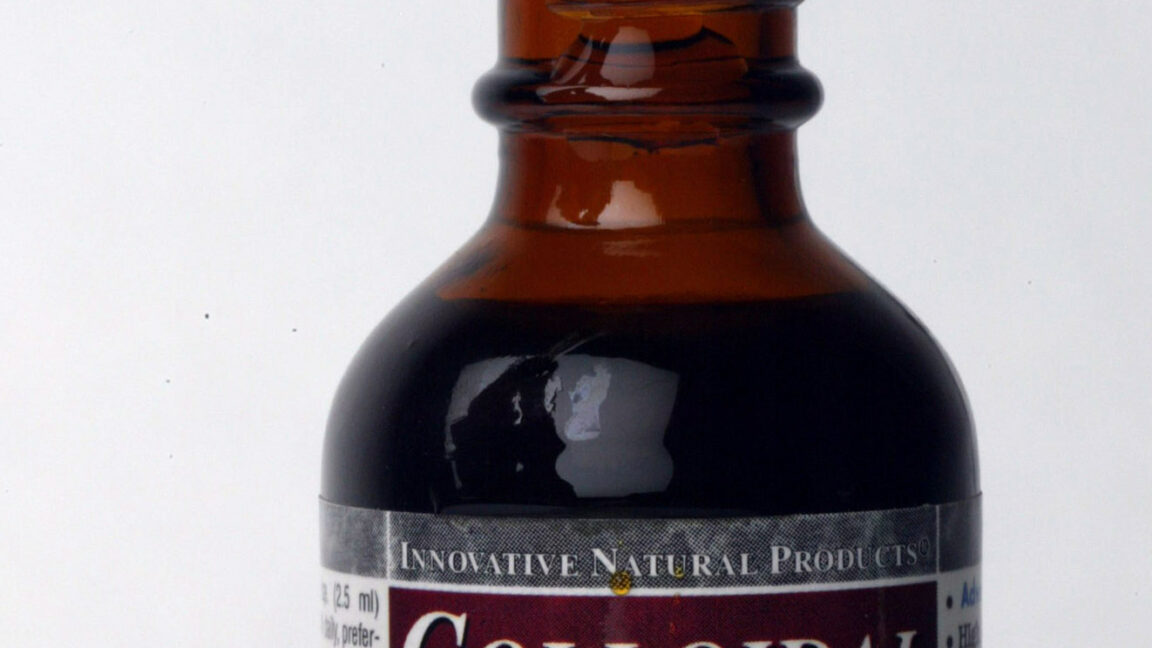When an 84-year-old man in Hong Kong was admitted to a hospital for a condition related to an enlarged prostate, doctors noticed something else about him—he was oddly gray, according to a case report in the New England Journal of Medicine.
His skin, particularly his face, had an ashen appearance. His fingernails and the whites of his eyes had become silvery. When doctors took a skin biopsy, they could see tiny, dark granules sitting in the fibers of his skin, in his blood vessels, in the membranes of his sweat glands, and in his hair follicles.
A blood test made clear what the problem was: the concentration of silver in his serum was 423 nmol/L, over 40 times the reference level for a normal result, which is less than 10 nmol/L. The man was diagnosed with a rare case of generalized argyria, a buildup of silver in the body's tissue that causes a blueish-gray discoloration—which is generally permanent.
When someone consumes silver particles, the metal moves from the gut into the bloodstream in its ionic form. It's then deposited throughout the body in various tissues, including the skin, muscles, heart, lungs, liver, spleen, and kidneys. There's some evidence that it accumulates in at least parts of the brain as well.
Discoloration becomes apparent in tissues exposed to sunlight—hence the patient's notably gray face. Silver ions in the skin undergo photoreduction from ultraviolet light exposure, forming atomic silver that can be oxidized to compounds such as silver sulfide and silver selenide, creating a bluish-gray tinge. Silver can also stimulate the production of the pigment melanin, causing darkening. Once discoloration develops, it's considered irreversible. Chelation therapy—generally used to remove metals from the body—is ineffective against argyria. That said, some case studies have suggested that laser therapy may help.
Source of silver
Of course, a key question in the case is how the man was exposed to so much silver. In past case studies of argyria, a common source is hokum therapies promoted by naturopaths and their ilk. Prior to the development of antibiotics, silver was used to treat infections and wounds. However, there are no proven benefits from taking oral doses, and silver is not an essential mineral.
In 2018, doctors in Canada reported a case of argyria in a gray 84-year-old woman who had taken a 1 mg/ml silver solution every two or three months for 15 years. The woman reported purchasing it from a naturopathic practitioner as a remedy for "various ailments." Likewise, in 2009, doctors in the UK reported the case of a 64-year-old man who turned silvery after drinking a liter of water containing colloidal silver every week for a year. "He had taken the silver solution as an alternative medical treatment 'to ward off infections' as he had read that colloidal silver 'cures everything,'" his doctors reported.
In the case of the Hong Kong patient, however, the cause wasn't so clear. The man reported that the only medication he took was finasteride, which is used to treat an enlarged prostate. He reported that he did not take any silver-containing products. He didn't appear to have any occupational exposure either, as he had worked for decades as a waiter. No other residents in his apartment building had similar discoloring.
After the man was discharged from the hospital, he was referred for further toxicologic evaluation. But, ultimately, the source of the man's silver exposure was never identified.
Argyria is often only a cosmetic condition, with few associated complications, as long as the level of silver exposure is low over time. Silver is considered to have low toxicity in humans and argyria is not considered a life-threatening condition. However, a large enough dose of silver—for example, 50 mg delivered intravenously—can cause acute toxicity and even death. In such an extreme case, silver poisoning damages bone marrow, the liver, and kidneys.


